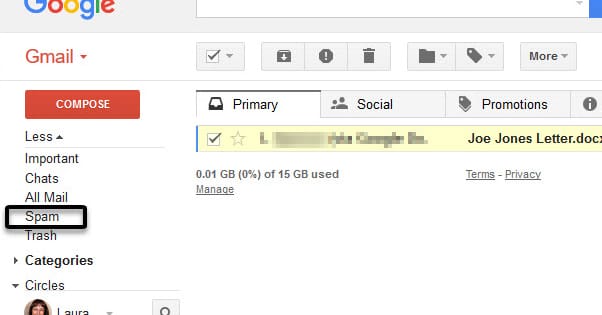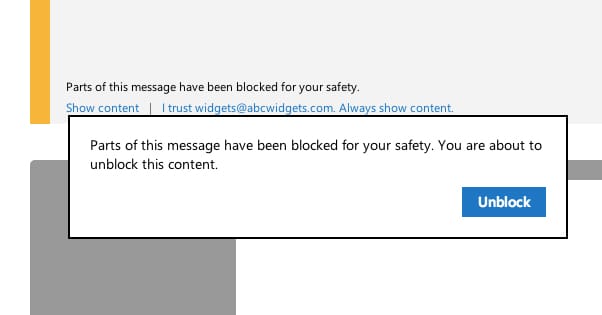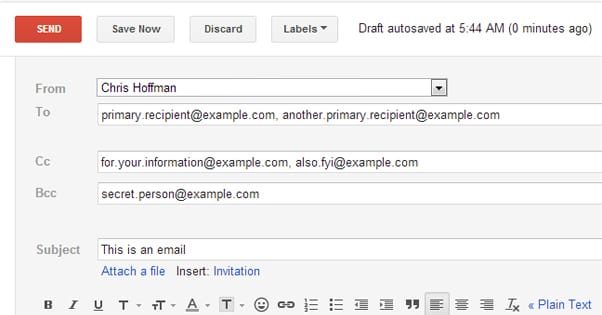30 Tips on How You Can Write Better Business Emails

Email is not a new technology, and while languages and etiquette have changed, writing itself has existed for millennia. Some elements of writing have stood the test of time, and are the foundation of the way we communicate today. Others are flourishes, little additional touches you can learn to use to convince people to open your messages or to respond to them. In all forms of business communication, be it to a vendor, a customer, support staff, in-house employees, or anywhere else, you can always improve your writing. Here are thirty tips you can put into practice.
1. Send Fewer Messages
The less often you’re sending messages, the more important each message tends to be. I’m on mailing lists that send me a new update every day, and I open about one every two months. I’m on lists that send me an update about once a month, and I open every single one.
2. Send Value
Try to limit your messages to times when you have something of real, tangible value to send. If all you’re doing is sending them a digest of your recent blog posts, consider promoting an RSS feed instead.
3. Avoid Spam Triggers
For the most part, sophisticated email spam filters are smart enough to only filter actual spam, even if you’re using spammy words.
Less intelligent filters, though, are liable to pick up messages on the borderline and drop them aside. Try to avoid trigger words and phrases whenever possible.
4. Use the Right Level of Formality
Some mailing lists are exceedingly casual. Others are extremely formal. Figure out what kind of audience you have, what kind of messaging they’re expecting, and what level of formality is appropriate. Avoid being overly casual or overly personal for impersonal updates, and likewise avoid being too formal for more personal messaging, like customer support.
5. Don’t Bury the Lede
The “lede” is the point of a story. All those frustrating news articles where the real meat is a page and a half of scrolling down? That’s burying the lede. Try to avoid this by listing your main points up front. Why are you messaging someone, and why should they care?
6. Explain Your Benefits
Depending on the type of message you’re sending, you may have an opportunity to pitch something new, be it an upsell or a new product. Take the time to explain the benefits of your product or system. Why is it worth the time it takes to read and look further in? All it takes is a simple list of bullet points.
7. Be Careful with Images
Attaching images can make a message look a lot nicer, but you shouldn’t rely on them to convey your point or showcase your call to action.
Remember that a lot of people browse email in a way that hides images or delays their loading, so they might not be visible to everyone.
8. Maintain a Valid Signature
Your email signature should include who you are, both in terms of your name and your role with your company. You should also include contact information, including phone, another email address if necessary, and even an address for your business. Make sure people know how to reach you. On the flip side, avoid pithy quotes, a final generic call to action, or some meme image trying to seem hip with the kids.
9. Add Extra Value, P.S.
Any final call to action you want to add after your message and closing, add in with a p.s. (postscript). Don’t go too deep with adding p.p.s. and p.p.p.s. or anything, but one final note can be very useful. I like to use it for a “by the way, if you read this far, here’s an extra little gift from me to you” message.
10. Proofread
Before you send any message, it can be worth your time to give it a solid proofread. There are also a bunch of apps you can use to spellcheck your email to make sure you aren’t sending something out with an embarrassing typo. Don’t forget to look for words that are spelled right but are incorrect for the situation.
11. Use Strong Language
“Power words” are words that encourage more visceral or more powerful emotions than other alternatives.
The difference between “great” and “transcendent”, or between “want” and “crave.” Using words with a stronger emotional impact can make your writing that much more persuasive. Just don’t overdo it.
12. Keep it Short
No email should be longer than a few hundred words. The longer a message is, the more likely everyone is going to quit reading halfway through. Open rates are one thing, but if you put your call to action at the bottom of a 4,000-word diatribe, no one will see it.
13. Ask Questions
I like to lead with a question. It puts the reader on the right track for the answer I want to give them. The trick is to know the kind of people you’re messaging, so you know the kind of questions to ask. I remember getting an email that started with “Do you want to get 100,000 downloads on your app?” Like, sure, I do, except I don’t have an app, so why are you sending this to me?
14. Punctuate Conservatively
We’ve all known someone who uses five or six periods after every sentence, or someone who dumps exclamation points like they went on clearance at Costco. Overusing punctuation of any type is going to look unprofessional and will deaden the value of the writing itself.
15. Avoid Confidential Information
This one is mostly for privileged communication or for customer support.
Never send any private information, confidential information, or personally identifiable information through email. Not only can it leak, it shows you have access to it, which you often shouldn’t.
16. Respond Quickly
There are numerous tools you can use to quickly create personalized email responses – hint hint – but even typing one out manually is better than nothing. Never let an email sit for more than a day without a response, and aim for something closer to an hour. The closer to instant you can be, the better.
17. Be Careful with Attachments
I don’t like sending attachments whenever I can help it. It trains people to open attachments from people they trust, which is fine, but it doesn’t help against phishing and other malicious attacks. With how easy it is to spoof the information in an email, the last thing you want to do is train your subscribers or your employees to open attachments without double-checking their validity.
18. Avoid CC and BCC
There are only a few times when you should be CCing anyone into a conversation.
No, fewer than you think. Virtually everyone overuses the feature, and CCs in particular tend to share long lists of email addresses you might not want to share. Pretty much everything you can do with a CC, you can do better in other ways.
19. Develop a Voice
This one isn’t something you can just pick up and do, but over time, you start to develop your unique voice through your written communication. Don’t be afraid to let that voice come through, as long as it’s not unprofessional or somehow offensive.
20. Keep it Simple
Again, remember the audience you’re reaching. Avoid using any sort of slang, jargon, or abbreviation that the reader might not recognize or know intimately. My general tip is to define or use the un-abbreviated version at least once before then dipping into the abbreviation for the rest of the message.
21. Never Assume Continuity
The only time where you can rely on the user having read your previous message is when you’re running a drip campaign where the message is only sent to people who are confirmed to have opened the previous message. Otherwise, the lack of reliable continuity can damage comprehension if you rely on it.
22. Drop the Buzzwords
There are a million business buzzwords you can use, and they’re all meaningless.
Just use plain English and get to the point, without needing to initiate someone into AGILE just to allow them to read what you’re writing.
23. Avoid Passive Voice
Passive voice is a problem we all have. When you’re talking about how a “meeting was led by the manager” you’re writing it passively. The manager led the meeting. Active voice is a more straightforward, more meaningful way of writing.
24. Don’t Overuse Personal Mentions
It’s one thing to write “Hi %name,” as your greeting. It’s quite another to mention their name four or five times throughout the message, or to get too personal with your phrasing. Everyone knows you’re not writing directly to them, so if you make them question it, you come across as a stalker, not a business owner.
25. Don’t Write Outside Your Comfort Zone
We’ve all seen times where some brand steps up and tries to connect with a younger audience, referencing out of date pop culture or slang that just comes across as pathetic. Don’t try it if you’re not familiar with the culture you’re reaching. This goes for any culture, be it young people, internet groups, or even different countries and races. If you don’t know what you’re doing, don’t try it.
26. Write a Clear Subject Line
I’ve seen it all; questions, emojis, clickbait, FW: FW: FW: FW: RE:, you name it. Time and time again, the best subject lines have proven to be the simplest, most direct descriptions of what’s inside the message. Relevance and simplicity rise above the rest.
27. Include the Next Step
Every email needs a purpose, and every purpose needs an action attached.
Always know what the next step is, and what you want the user to do. That’s your call to action. Make sure you have that call to action in your writing at least once, if not more than once, as is most fitting for the length and subject of the message you’re writing.
28. Don’t Worry about Min-Maxing
Remember the Pareto Principle when you’re optimizing and editing. If you’ve reached the point where you’re split-testing whether “hi” or “hello” works better as a greeting, you’re working for diminishing returns. It’s better to change gears and look for better sources of value at that point.
29. Don’t Argue
In some cases, a calm and rational argument can take place over email. In most cases, argument means heated feelings and insults thrown back and forth, which is almost never acceptable. If you trash-talk a customer, competitor, or boss, remember: your email is on record. Your IT department can probably access those messages if they need to, and they’re often on record if it comes to any kind of law enforcement. Be careful with what you say.
30. Segment
Audience segmentation is probably worth an entire article of its own. Splitting up your audience, even amongst one mailing list, can be a great way to make several more personal – and more effective – messages instead of one mass mailer. Some basic segmenting and split-testing can help you craft great messaging for specific demographics, specific parts of your sales funnel, and other potential divisions amongst your audience.








